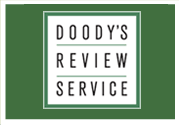|
|
|
eBook/Digital Version available from:
|
 Score: 100
Score: 100 |
 |
| Getting Unstuck from PTSD: Using Cognitive Processing Therapy to Guide Your Recovery |
 |
|
Doody's Core Title (2024 Edition)
|
 |
| Score(s): |
|
2.47
(Health Sciences - Psychology, Clinical)
|
|
 |
ISBN: 978-1-4625-4983-2,
303 pages,
Soft Cover
ISBN-10: 1-4625-4983-7 |
 |
| Copyright: |
2023 |
 |
| Edition: |
1st |
 |
| Author: |
Reick, Patricia A., PhD, ABPP; Stirman, Shannon Wiltsey, PhD; LoSavio, Stefanie T., PhD, ABPP |
 |
|
Specialties:
|
Psychology, Clinical |
 |
| Publisher: |
Guilford Press |
 |
| List Price: |
$24.95 |
 |
| Google: |
|
|
 |
|
|
|
|
At A Glance
|
Are you having trouble getting back to normal after a frightening experience? Do you feel stuck second-guessing what you did or did not do in the moment? Do you find yourself avoiding places, people, or sensations that remind you of what happened? Problems like these may be symptoms of posttraumatic stress disorder (PTSD). The good news is that recovery is possible. This is the first self-help workbook based on cognitive processing therapy (CPT), one of the gold-standard treatments for PTSD. Leading authorities - including the originator of CPT - have created a complete program featuring step-by-step exercises, practical tools that you can download and print as needed, and empathic stories of people working toward recovery. Using CPT techniques to systematically reexamine unhelpful thoughts can make the memories less painful and overwhelming. It can help you strengthen your relationships and restore a sense of safety and trust. Learn how to get unstuck from what happened in the past - so you can build the life you want now. Learn more and order here.
|
|
Reviewer:
|
Nicholas Greco IV,
MS, BCETS, CATSM, FAAETS
(C3 Education and Research, Inc.)
|
 |
|
Range
|
Question
|
Score
|
| 1-10 |
Are the author's objectives met? |
10 |
| 1-10 |
Rate the worthiness of those objectives. |
10 |
| 1-5 |
Is this written at an appropriate level? |
5 |
| 1-5 |
Is there significant duplication? (1=significant, 5=insignificant) |
5 |
| 1-5 |
Are there significant omissions? (1=significant, 5=insignificant) |
5 |
| 1-5 |
Rate the authority of the authors. |
5 |
| 1-5 |
Are there sufficient illustrations? |
5 |
| 1-5 |
Rate the pedagogic value of the illustrations. |
5 |
| 1-5 |
Rate the print quality of the illustrations. |
5 |
| 1-5 |
Are there sufficient references? |
5 |
| 1-5 |
Rate the currency of the references. |
5 |
| 1-5 |
Rate the pertinence of the references. |
5 |
| 1-5 |
Rate the helpfulness of the index. |
5 |
| 1-5 |
If important in this specialty, rate the physical appearance of the book |
N/A |
| 1-10 |
Is this a worthwhile contribution to the field? |
10 |
| 1-10 |
If this is a 2nd or later edition, is this new edition needed? |
N/A |
|
 |
|
Reviewer:
|
Nicholas Greco IV,
MS, BCETS, CATSM, FAAETS
(C3 Education and Research, Inc.)
|
 |
|
Description
|
| This book is an insightful and powerful guide to helping those with PTSD utilizing cognitive processing therapy (CPT) as the backbone for the step-by-step exercises. It is a comprehensive approach to helping individuals overcome their traumas and get back to the life that they want to have. |
 |
|
Purpose
|
| This book is a self-help book but can also be used along with a therapist to help guide individuals through their PTSD utilizing cognitive processing therapy. The authors have realized through their years of experience collaborating with clients suffering from trauma the effectiveness of CPT but that it is not always available due to lack of therapists, insurance concerns and costs, as well as time considerations for clients. The authors believe that CPT should be available to everyone and have written this guidebook as a self-paced guide for individuals to use to work through their trauma. Considering how great the need is for mental health services in this country, these are clearly worthy objectives. |
 |
|
Audience
|
| The book is for anyone who has experienced one or more traumatic events, have been bothered by symptoms of PTSD, are willing to face their traumatic experiences to move toward recovery, and are willing to make it a priority to spend time practicing the skills in this guide. The authors are well experienced clinicians. One of the authors is the original developer of CPT. |
 |
|
Features
|
| The book contains five sections beginning with a thorough overview of the book, a section on how people get stuck and how to get unstuck from PTSD. Part II helps the reader identify where they are stuck, includes a solid introduction to PTSD and trauma recovery, moves into how to begin to process the meaning of one's trauma, and then how to begin to identify thoughts and feelings. Part three takes the reader through getting unstuck from beliefs about trauma and the utilization of various worksheets. Part four delves into getting unstuck in the present and planning for the future, while part five rounds out finishing CPT. The appendix and resources are informative and the worksheets and checklists throughout the guide make mastering this material both rewarding and invaluable. |
 |
|
Assessment
|
| This is one of the most easy-to-read and easy-to-use self-help guides for PTSD in a long time. It is reader friendly, the material is digestible, and the worksheets are enjoyable to use. Highly recommended! |
 |
|
|
|
|
|
|
|
